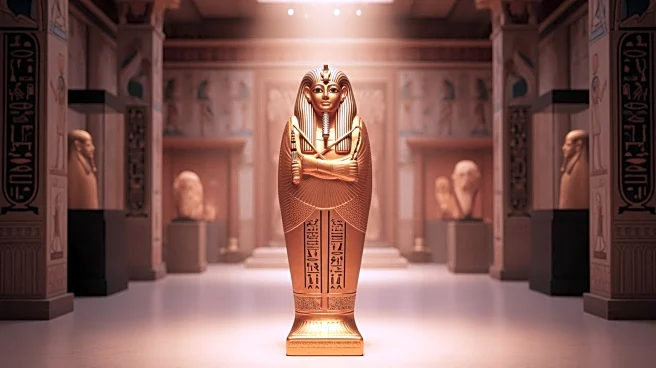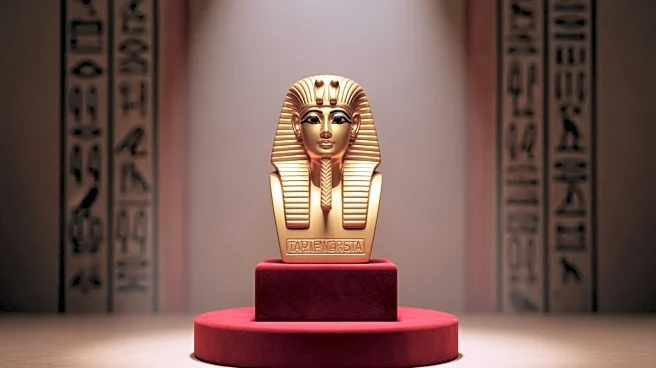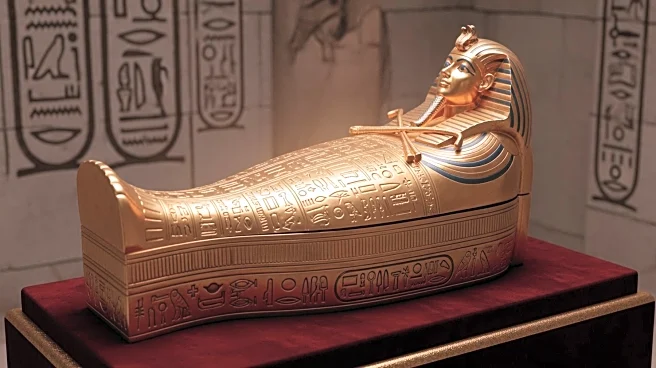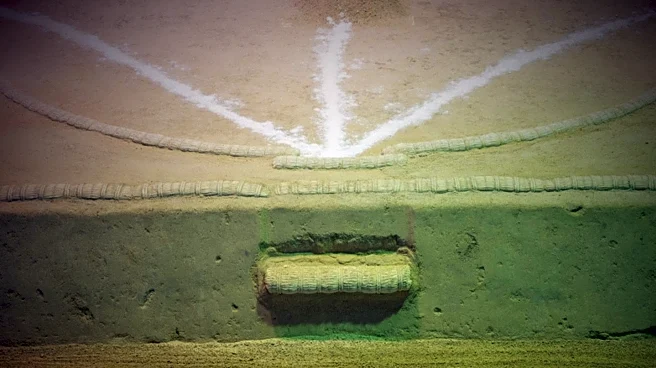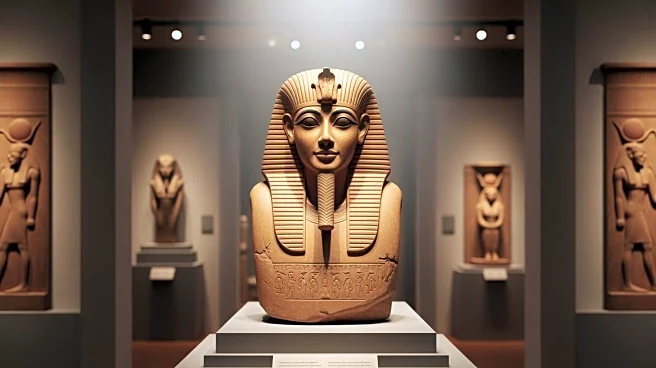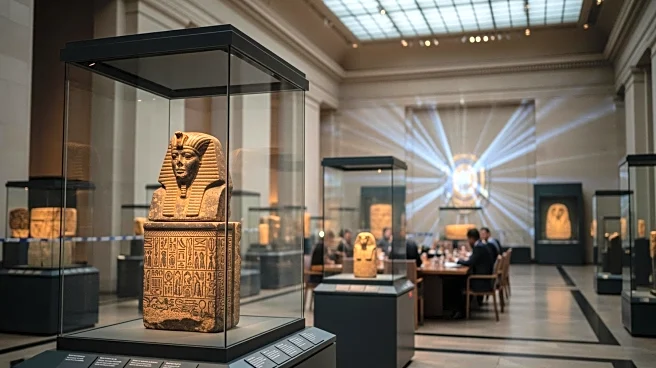What's Happening?
The Grand Egyptian Museum, a $1 billion project, has officially opened to the public following an inaugural ceremony attended by royals and heads of state. Located near the Pyramids at the edge of Cairo, the museum is touted as the world's largest dedicated
to a single civilization, featuring nearly 50,000 artifacts. Among its highlights is the complete collection of treasures from King Tutankhamun's tomb, discovered in 1922, which includes over 5,000 artifacts such as jewelry, gilded chariots, and the iconic gold death mask. The museum's CEO, Ahmed Ghoneim, emphasized the significance of consolidating these treasures in one location to enhance the visitor experience.
Why It's Important?
The opening of the Grand Egyptian Museum is expected to significantly boost Egypt's tourism sector, which is a vital component of the country's economy. With an anticipated 7 million visitors annually, the museum aims to invigorate economic activity and increase tourism revenues. The strategic location near the Pyramids further enhances its appeal as a major tourist destination. The museum's ability to attract international visitors could provide a much-needed stimulus to Egypt's economy, which has faced challenges in recent years.
What's Next?
The museum plans to enforce a daily visitor cap of 20,000 to ensure a smooth experience for all guests. This measure is part of a broader strategy to manage the influx of tourists while maintaining the quality of the visitor experience. As the museum becomes a focal point for cultural tourism, it may also inspire further investments in Egypt's heritage sites and tourism infrastructure, potentially leading to more job opportunities and economic growth.
Beyond the Headlines
The consolidation of King Tutankhamun's treasures in one location not only enriches the museum experience but also underscores the importance of preserving cultural heritage. This move may encourage other countries to invest in similar projects that celebrate and protect their historical artifacts. Additionally, the museum's opening could foster international cultural exchanges and collaborations, enhancing Egypt's global cultural standing.
